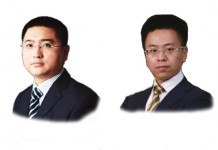As mentioned in last month’s issue, a governance structure where each party holds 50% equity interest has a serious defect: once the “personalised nature” of the company breaks down, giving rise to a “deadlock”, it is impossible to cure the situation through the company’s own equity governance structure. Under this situation, it is likely that a company dissolution dispute will occur, as no effective resolution can be passed.

Shi Anning
北京大成律师事务所
高级合伙人
Senior Partner
Dacheng Law Offices
Burden of proof and rules
The different interests of the parties for the dissolution of a company result in a difference in their approaches to the adducement of evidence. However, if the claims of either party are to secure judicial support, they must comply with the rules of evidence set out in the Company Law and its judicial interpretations.
The Interpretations of the Company Law (2) specify the conditions for the dissolution of a company where a shareholder alone or shareholders together hold at least 10% of all the shareholder voting rights and institute a legal action for the dissolution of the company on the grounds set out below, and if the provisions of article 183 of the Company Law are satisfied, the people’s court is required to accept the same:
- The company has been unable to call a shareholders’ meeting or shareholders’ general meeting for at least two years and serious difficulties have arisen in its operations and management;
- When they vote, the shareholders have been unable to reach the statutory percentage or the percentage specified in the company’s articles of association, making it impossible to pass a valid resolution of the shareholders’ meeting or shareholders’ general meeting for at least two years, and serious difficulties have arisen in the company’s operations and management;
- There has been a longstanding conflict between company directors that cannot be resolved by the shareholders’ meeting or shareholders’ general meeting, and serious difficulties have arisen in the company’s operations and management; or
- Another serious difficulty has arisen in the company’s operations and management and its continued existence would cause a material loss to the interests of the shareholders.
These conditions are key for substantive examination in legal action to dissolve the company. Both plaintiff and defendant should bear the burden of proof and comply with the corresponding rules of evidence.
The party advocating dissolution must adduce evidence around the statutory conditions for the dissolution of a company. It must recognise that the “operational and management difficulties” in the dissolution system refers to difficulties in the company’s equity governance structure, which are manifested in difficulties in making decisions on the company’s operations and the breakdown in the company’s decision-making mechanism, not to the fact that the company is unable to carry on actual commercial operation activities.
If they are understood as difficulties in commercial operation, then the legal basis of the company dissolution system will be lost, the reason being that where a company is under the control of one of the shareholders, its commercial operations will be more efficient and decision-making more flexible; however, this is a situation that is clearly opposed by the Company Law, as it damages the overall safety of the company investment system.
Generally, the shareholder that opposes the dissolution of the company has de facto control of the company, the proof being the decision-making mechanism of the company working normally without any deadlock.
The party advocating dissolution is usually unable to participate in the decision-making and business activities of the company, resulting in the company perversely becoming a “one-person company”. Due to the existence of this circumstance, the line of thinking on the adducement of evidence of the party opposed to dissolution can easily fall into error. The evidentiary approach that they adopt usually takes the form of presenting evidence showing that the company has undergone annual inspections, paid taxes, paid wages to employees and paid social insurance premiums normally, and that the company is profitable, and on this basis deem that the company is not experiencing “operational and management difficulties”, thus denying that the conditions for dissolution of the company have been fulfilled. However, based on the adjudicatory spirit of current guiding precedents, such evidence in fact lacks probative force.
Another point worth noting in judicial practice is whether an examination of the legitimacy of the objective of the legal action to dissolve the company needs to be carried out. It is the author’s opinion that defence arguments of the type that deny the “legitimacy of the objective” are a product of mechanically applying the legal system for legal actions involving shareholders’ right to know, an argument that involves erroneous application of the law.
The reason for a legal action to dissolve a company is that the “personalised nature” of the company has been seriously and irreparably damaged, and that there is an essential conflict between the continued existence of the company and the objectives of the company at the time of its establishment. Accordingly, requiring an examination of the so-called “legitimacy of the objective” has absolutely no legal basis.
Instituting a further legal action
Pursuant to the Civil Procedure Law, the mechanism for correcting erroneous rulings or judgments mainly relies on the adjudication supervision system, also known as the retrial system. However, the Interpretations of the Company Law (2) specify that the judgment rendered by a court in a legal action to dissolve a company is legally binding on all of the shareholders of the company. If, after the court renders a ruling rejecting the claims in the legal action to dissolve the company, the shareholder that instituted the legal action or another shareholder institutes a legal action to dissolve the company on the basis of the same facts and grounds, the court will not accept the case.
It is the author’s opinion that even though the claims for dissolution in any single case are not upheld, this does not mean that the shareholders cannot again advocate the dissolution of the company in a subsequent legal action. The dissolution of a company is equivalent to the termination of an agreement to invest in a company between the shareholders.
Once the conditions for dissolution are again satisfied, a shareholder may again institute a legal action for dissolution and need not stickle on correction of the original erroneous judgment through a retrial procedure to achieve its objective of dissolving the company. In such a circumstance, it will not fall within the confines of the so-called “same facts and grounds” in the above-mentioned judicial interpretations.
邮编:100020
7/F, Building D, 9 Dongdaqiao Road
Chaoyang District, Beijing 100020, China
电话 Tel: +86 10 5813 7799
传真 Fax: +86 10 5813 7788
电子信箱 E-mail:
anning.shi@dachenglaw.com
www.dachenglaw.com






















